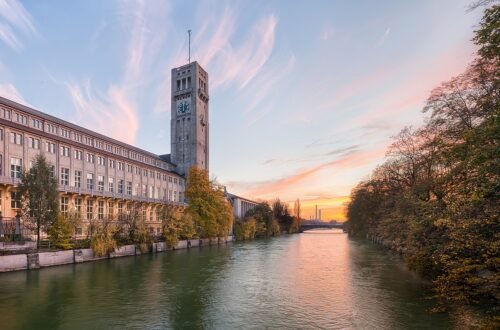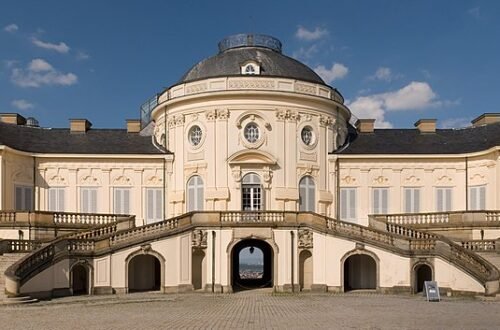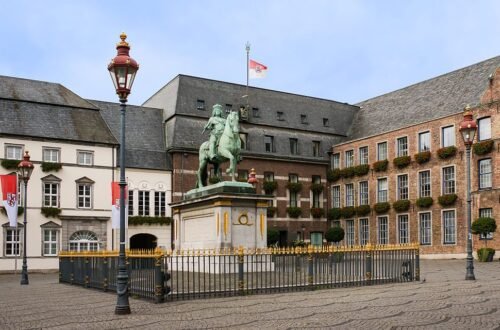
15 Best Things to See in Essen (Germany)
In the Ruhr Valley, the name Essen was formerly synonymous with German industry and the Krupp family, today known as ThyssenKrupp. But you might be in for a surprise if you arrive expecting to see a post-industrial metropolis. Modern structures and parks have been left in Essen’s tertiary sector, and an industrial site with UNESCO status has been meticulously restored to serve as a landmark. High-profile music halls have been built in former industries, and the Zollverein Mining Complex is imposing and exquisite with its Bauhaus design and enormous coal washery. In their enormous family home, you can get to know the Krupps a little better and go on excursions to the real medieval villages in Essen’s suburbs. Let’s examine the top activities in Essen:
- Werden Old Town
- Old Synagogue
- Essen Cathedral Treasury
- Philharmonie Essen
- Zollverein Coal Mine Industrial Complex
- The Red Dot Design Museum
- Kettwig Historical District
- Aalto Theatre
- Baldeneysee
- Ruhr Museum
- Grugapark
- Essen Minster
- Margarethenhöhe
- Museum Folkwang
- Villa Hügel
Werden Old Town
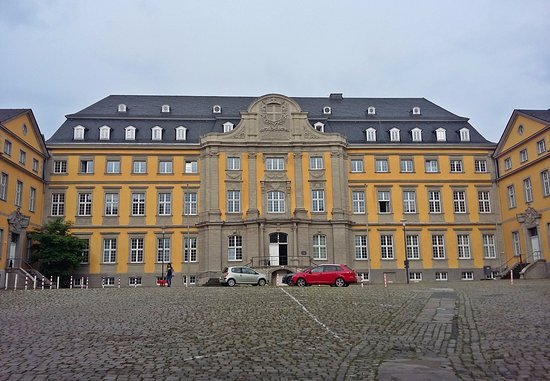
Werden, a village inside the boundaries of Essen but with a distinct community, is situated on a bend in the Ruhr. The tram or bus will take you there. It is still accessible via Essen’s public transportation and is around seven kilometres south of the city centre. Werden, a village with peaceful alleys lined with old timber-framed buildings, is a world away from contemporary Essen. Numerous of Essen’s more affluent residents opt to reside in this area of rural Germany and commute to Essen. The best thing to do is simply stroll the cobblestone streets and peruse the neighbourhood ice cream, cheese, candy, and pastry shops.
Old Synagogue
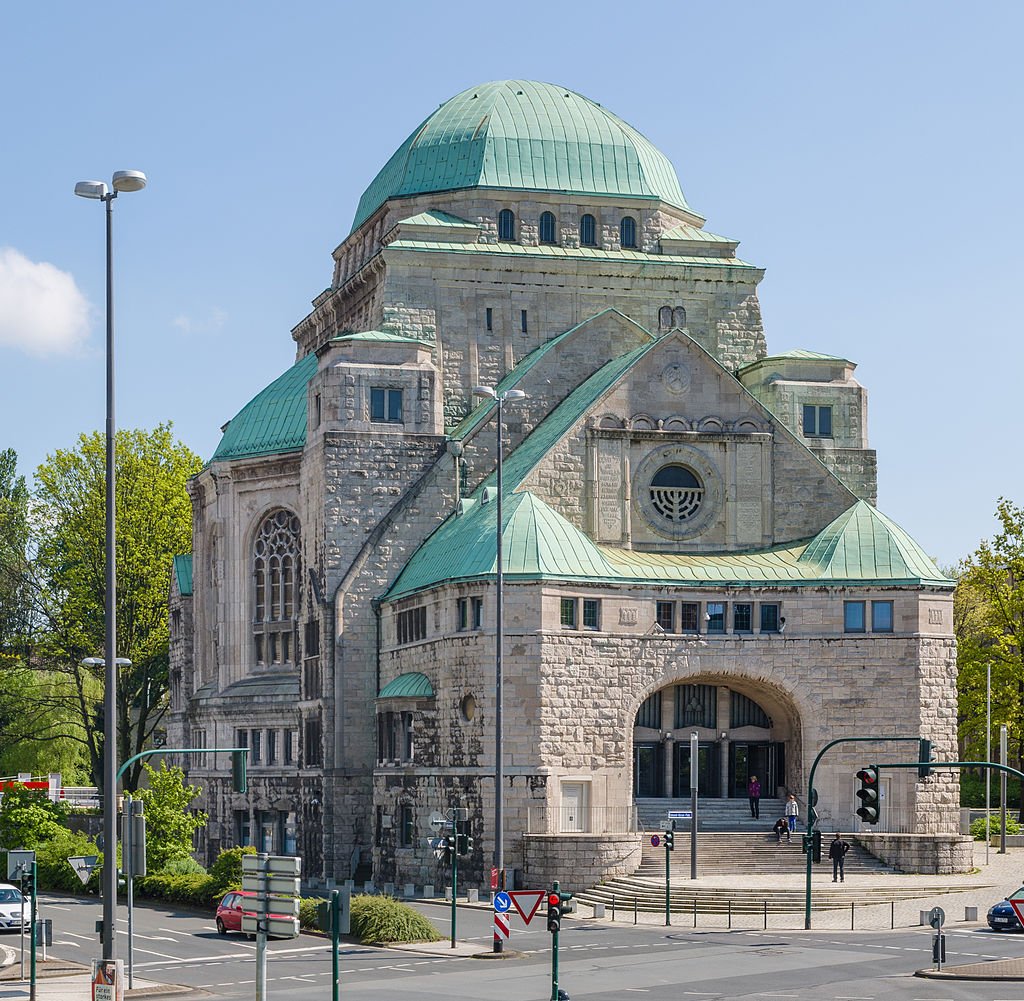
Over 5,000 Jews were served by Essen’s sizable Old Synagogue when it first opened in the 1910s. The outside of the building survived the war despite the inside being burned and pillaged during the Nazi era. The synagogue’s interior mosaics and Torah ark were repaired after a brief stint as an industrial design museum, and in 2010, this lovely relic reopened as a centre for Jewish culture. The exhibitions, which describe Jewish holidays, customs, and daily life, have been designed for people of all ages and educational levels. The Old Synagogue’s imposing dome rises 37 metres above the ground, making it the biggest free-standing synagogue north of the Alps as of this writing. The dome’s intriguing aspect is that it has an amplification effect, making even the smallest whisper audible throughout the synagogue.
Essen Cathedral Treasury
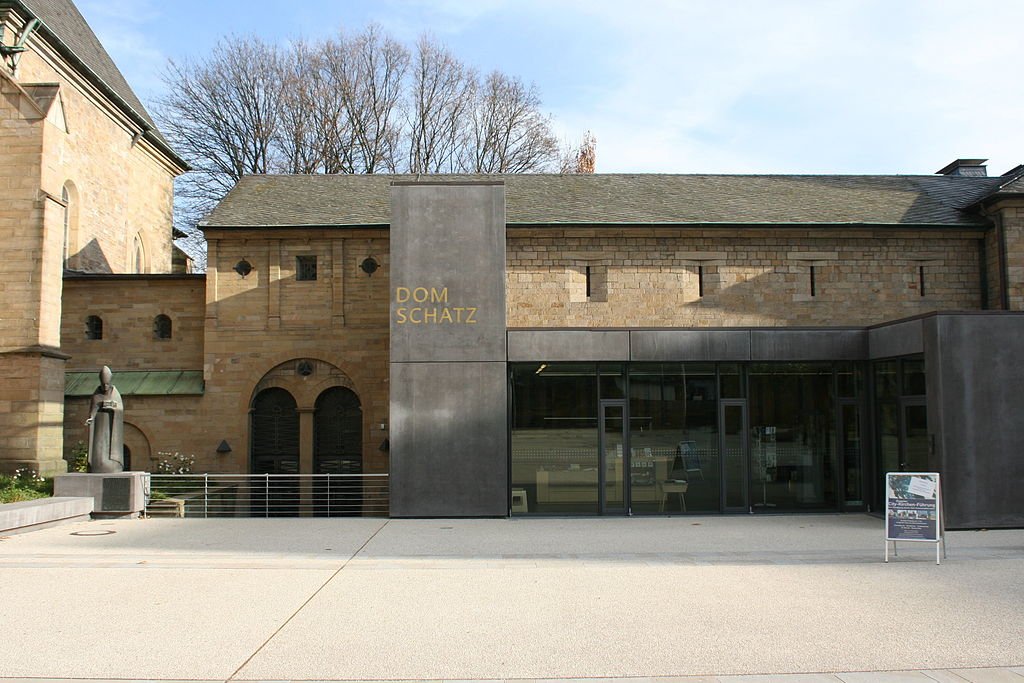
The public can visit the treasury room at the cathedral, which is renowned for the price and age of its sacred goods. The treasury is kept up by the cathedral chapter and isn’t really a museum because, whenever feasible, the artefacts you see still serve a useful purpose. The sheer number of Ottonian artefacts from the 10th and 11th centuries is almost unbelievable. You can gaze in awe at a golden crown, four processional crosses, and a ceremonial sword in a gold sheath. 16 Burgundian fibulae (ceremonial brooches) from the 1300s are a little more recent but no less fascinating.
Philharmonie Essen
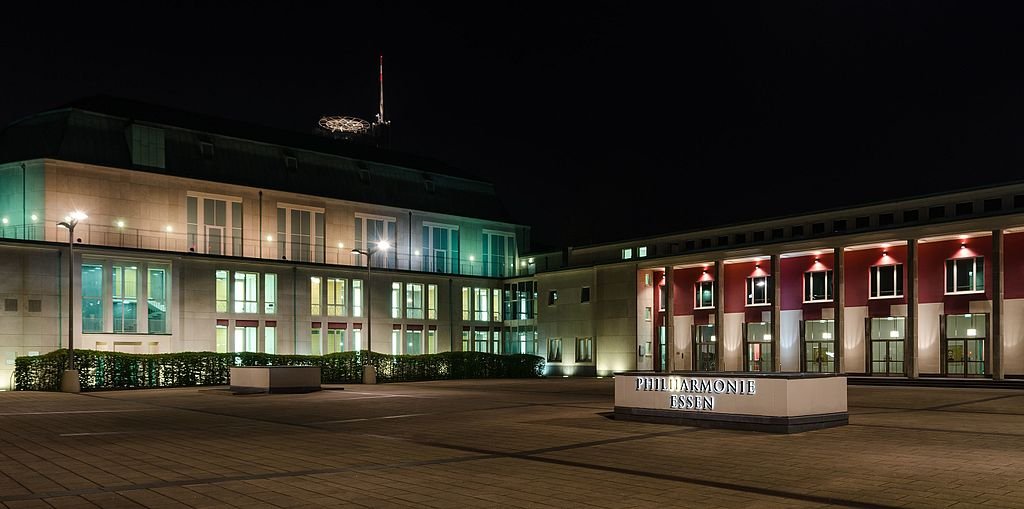
The Stadtgarten’s concert hall had a €72 million makeover at the beginning of the 2000s after being opened at the turn of the 20th century. The main Alfred-Krupp-Saal can accommodate 2,000 people and boasts outstanding acoustics that is appropriate for its illustrious performers. If you know you’ll be visiting Essen soon, check out the schedule for the season and make reservations early to see some of the greatest classical musicians of our day. For instance, in the previous year, the Philharmonie Essen hosted performances by Martha Argerich and Ludovico Einaudi.
Zollverein Coal Mine Industrial Complex
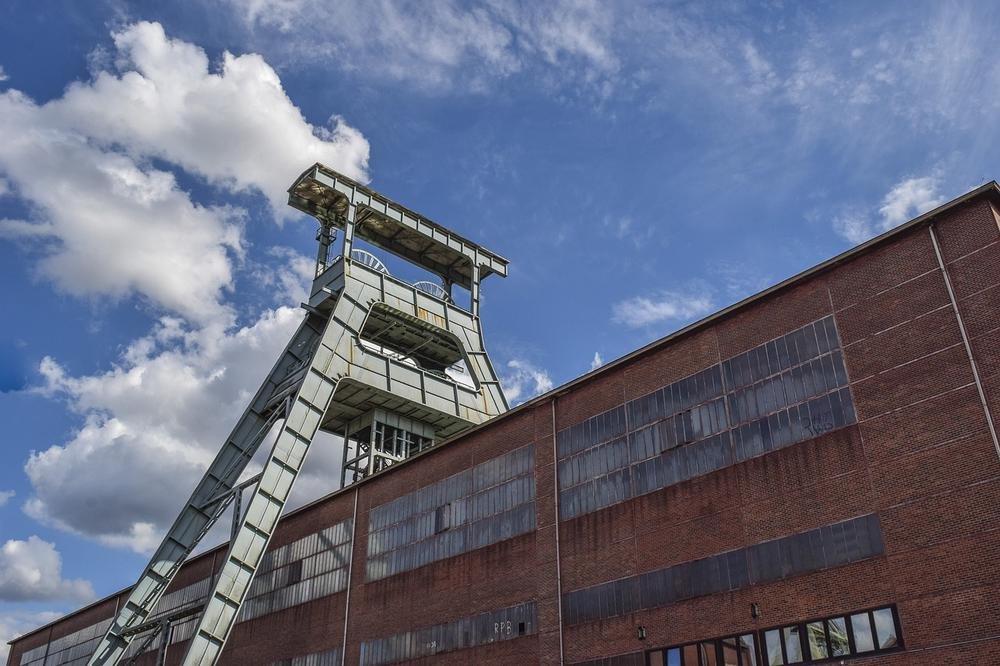
The Zollverein Complex, a sizable coal mine and coking mill in operation from 1847 to 1993, is the most renowned industrial complex in the Ruhr and a World Heritage Site. Its heyday was after World War II when this type of manufacturing fueled Germany’s Wirtschaftswunder (economic miracle). In addition, the Zollverein Complex has been dubbed the most attractive because of Shaft 12’s crisp Bauhaus design, which was finished in 1932. After it closed, the 100-hectare complex was sold to the city and was soon designated as a monument and a UNESCO site. With attractions like the Red Dot Design Museum and the Ruhr Museum, it has become a popular day trip destination.
The Red Dot Design Museum
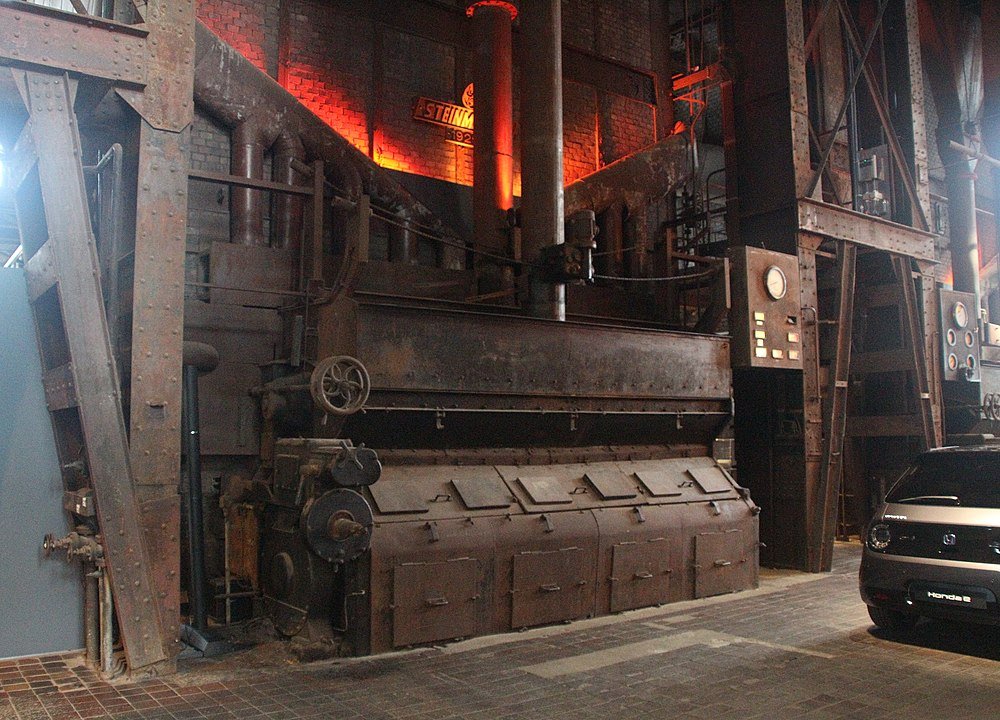
Tens of thousands of applicants from all around the world submit entries each year for the Red Dot Design Award, a prestigious international award for industrial design. The award includes categories for household appliances, tools, portable devices, cars, and furnishings. The jury is typically made up of the most prominent figures in design and has recently included Jimmy Choo, Roy Fleetwood, and Kenneth Grange. This highlights the significance of the award. The winning and commended entries are then shown in the modern surroundings of Shaft 12’s Boiler House. As a result, you’ll be able to peruse cutting-edge design and adore earlier winning submissions from organizations like Porsche, Siemens, Apple, BMW, Bosch, and Lenovo.
Kettwig Historical District

Kettwig, which was once a distinct town, is located about 10 kilometres southwest of Essen and was integrated into Essen in 1975. Kettwig was once a weaving hamlet hundreds of years ago, but by the time of World War II, it had long since disappeared, and the absence of manufacturers kept Kettwig safe. A tour of the spotless 17th-century centre is recommended because of its charming half-timbered and slate-covered homes on winding cobblestone streets. You can meander around the adorable shops on the main pedestrian strip before taking a breather at a Biergarten or cafe. Stairs lead down to an attractive riverside promenade.
Aalto Theatre
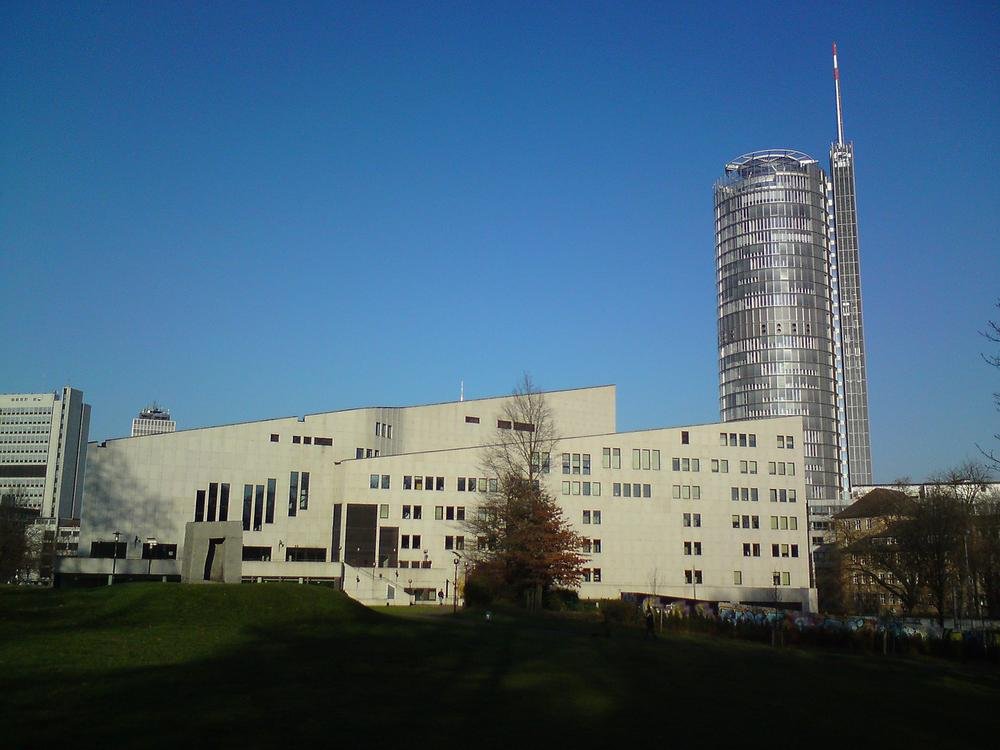
Essen’s opera house, which bears Avar Aalto’s name, debuted in 1988, 30 years after Aalto’s design won the competition. In actuality, when work started in 1983, Aalto had been deceased for seven years. The Aalto Theatre, frequently ranked among Germany’s greatest opera houses, stands out with its flowing lines in contrast to the previous Historicist palaces and Neoclassical porticos. Despite being drawn out 60 years ago, it still looks fantastic. Check again before you travel to Essen to see if anything catches your attention. The 2017–18 season’s premieres include Hansel and Gretel, Salome, Eine Nacht in Venedig, and Il Trovatore.
Baldeneysee
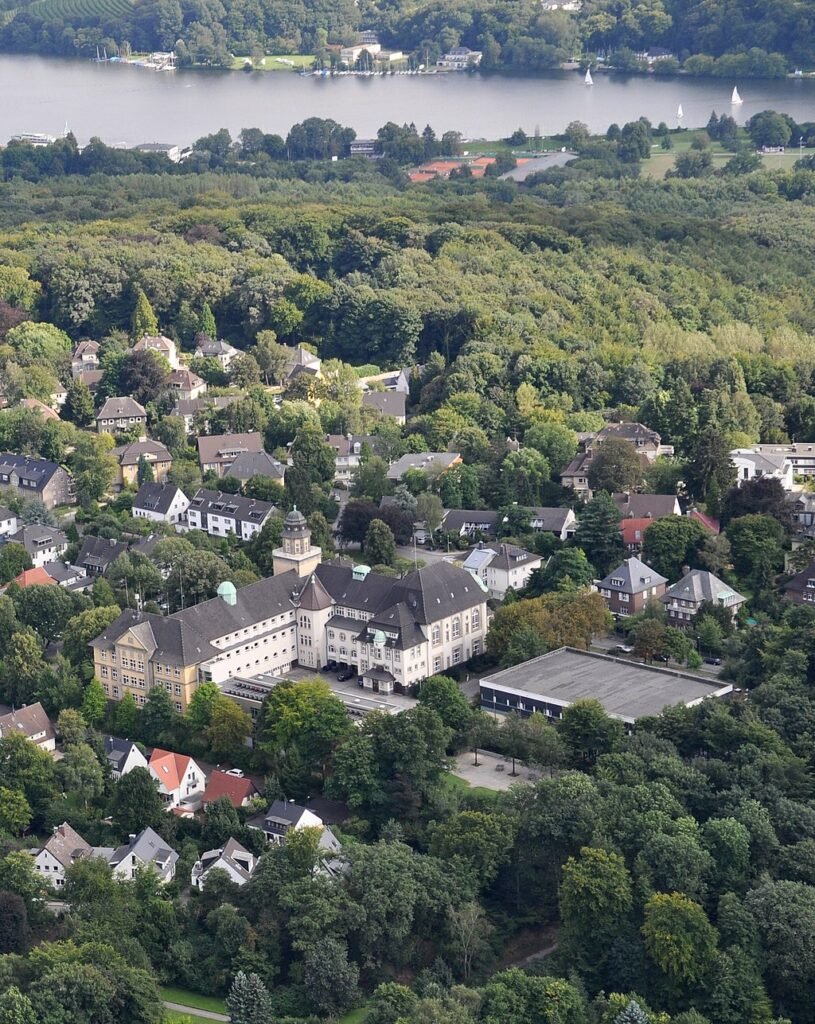
A dam was built in the 1930s to create Lake Baldeney, the largest of the six reservoirs in the Ruhr. And Villa Hügel, on the north bank, received lovely lake views rather than a riverfront view. The lake offers opportunities for exercise and relaxation, including strolling or cycling along its shoreline or, in the summer, travelling on the MS Stadt Essen pleasure boat. The lake has 30 regattas organised by 25 sailing clubs each year, along with rowing and canoeing competitions. A sandy beach, a bar, playgrounds, and a mini golf course can all be found at Seaside Beach Baldeney, which resembles a little vacation resort. So, order a refreshing beverage and relax on a deck chair or sun lounger to watch the sails sail by.
Ruhr Museum
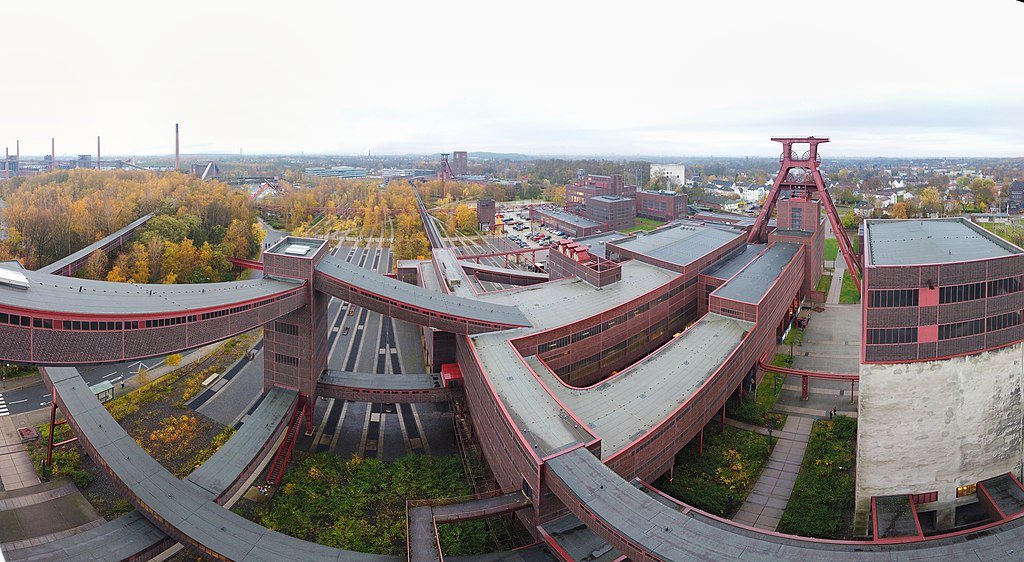
A museum for the entire Ruhr industrial region has been established in the complex’s Bauhaus Coal Washery. First off, the museum’s design is fascinating since it incorporates the plant’s network of towers and conveyor belts. You ascend an outdoor escalator to the top level of the museum to enter, and you then descend through the exhibitions. These document the Ruhr’s beginnings and development while examining the people who worked in the region’s mines, factories, and offices around the turn of the 20th century. The geology and chemistry of the coal seams that emerged 300 million years ago are also described in interesting detail.
Grugapark
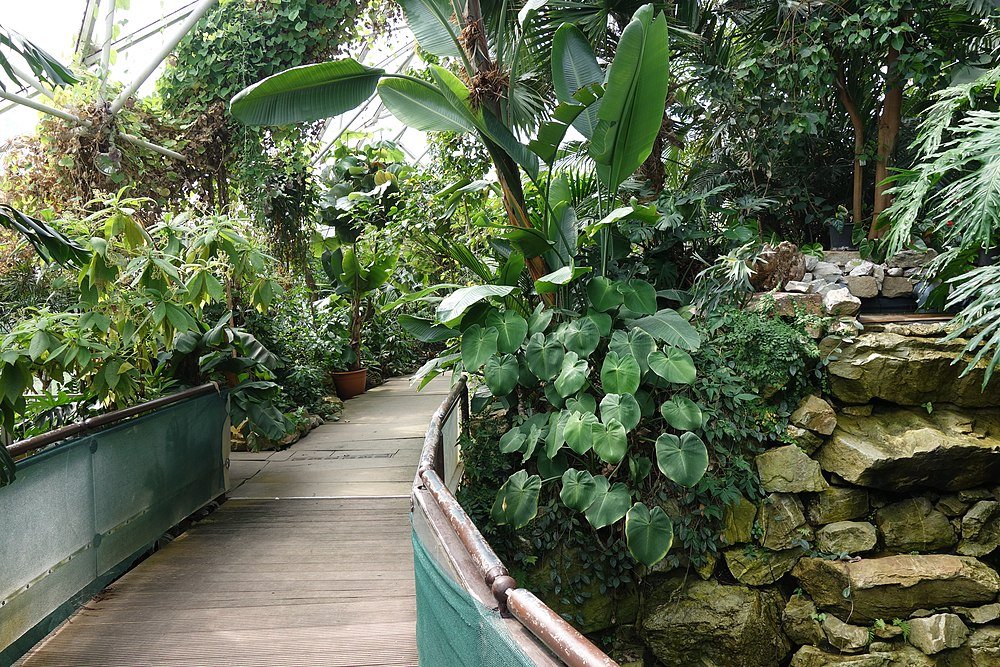
Grugapark ought to be one of your go-to places on warm days. It’s less of a conventional metropolitan park and more of a collection of green-themed attractions. A tropical pyramid-shaped home, an alpine garden with a waterfall, a Westphalian farmer’s garden, a rose garden, a woodland valley with bonsai, and a rhododendron garden are just a few of the highlights of this botanical garden. In addition, the park features aviaries and sizable enclosures for owls, flamingos, and herons, as well as a superb sculpture garden featuring pieces by Henry Moore, Auguste Rodin, Adolf Wamper, and Fritz Klimsch. In addition, the Grugabahn miniature railway, a petting zoo, a music pavilion with 1,000 seats, and a day spa that debuted in 2006 are all present.
Essen Minster
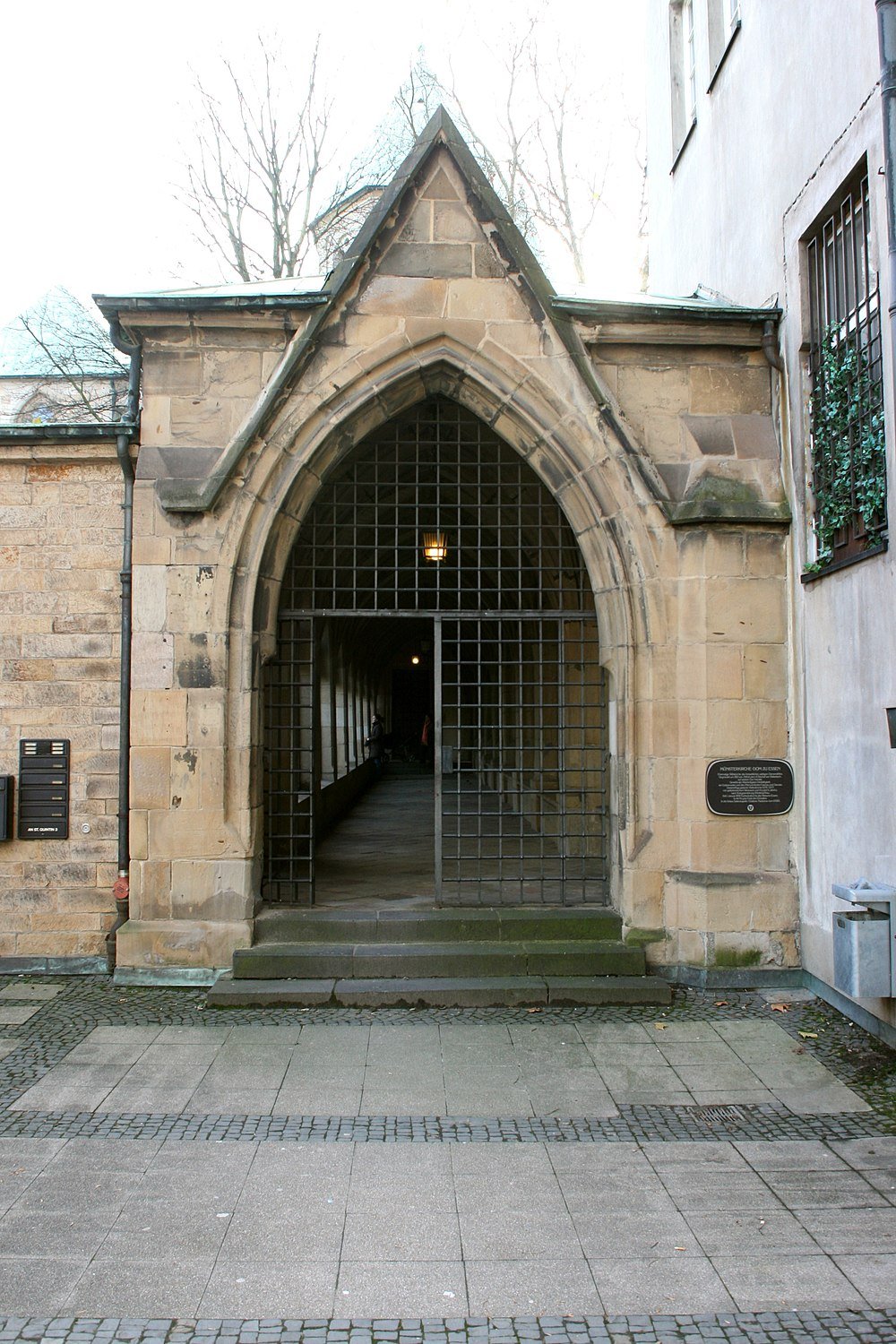
The Golden Madonna of Essen is a must-see at Essen’s main church. This priceless gem, which was sculpted around 980 and is covered in gold leaf, is both the oldest free-standing medieval sculpture north of the Alps and the oldest Mary sculpture in the entire world. Both the crypt and the church’s imposing westwork date to the Ottonian reign in the early 900s. The three octagonal towers, a massive central building, and the two smaller towers make up the westwork. Small windows with semicircular arches pierce each of them, and when you enter, you can make out the ghostly remains of the ancient Ottonian murals. The remaining portion of the church, which was built in the 13th century, took the brunt of a 1943 bombing strike that mostly spared the crypt and westwork.
Margarethenhöhe
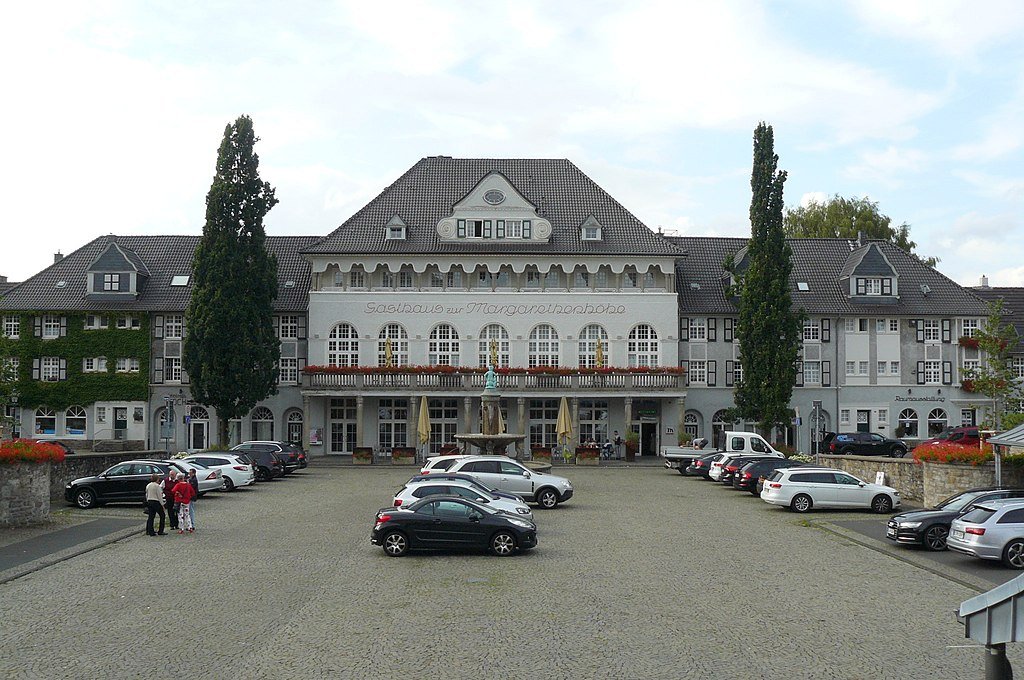
The first garden city in Germany is located just west of Grugapark. Maragarethe Krupp established Margarethenhöhe, a 115-hectare area, in 1906. Between 1906 and 1938, it expanded in stages. The late 19th-century utopian ideas, in which factory workers were given more space to live and rest, served as inspiration for its creation. The architect Georg Metzendorf’s houses and apartment complexes, which make up more than half of Margarethenhöhe, are attractive and worth taking a photo of if you’re going by. The houses are noteworthy because they are modular, made up of the same architectural components but reused in various ways throughout the development. As a result, no two houses on a particular street have the same appearance. The entire estate is now a protected monument, and Margarethe Krupp Stiftung is in charge of managing it (foundation).
Museum Folkwang

Every European trend is represented in the renowned art museum in Essen, from the Romantics in the 19th century to Abstract Expressionism after World War II. The museum was established in Hagen in 1902 and relocated to Essen in 1921 after selling its collection to the city. Famous artists including Caspar David Friedrich, Ferdinand Hodler, Gustave Courbet, Monet, van Gogh, Renoir, Gauguin, Franz Marc, Kirchner, Kandinsky, and Paul Klee are among the feast artists represented there. The German Poster Museum’s extensive collection was also absorbed by the Museum Folkwang, which now displays 340,000 graphics from the GDR, the Weimar Republic, and Germany throughout the past 30 years in temporary exhibitions.
Villa Hügel
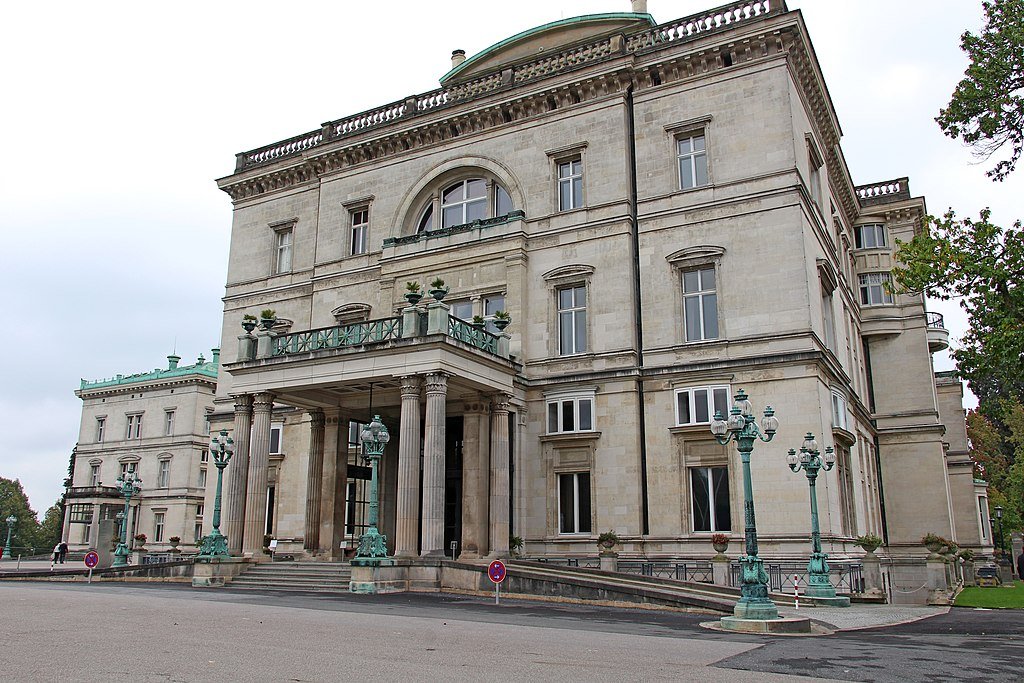
Beginning in the 1870s, Alfred Krupp, a member of the illustrious industrialist family, placed an order for a 269-room villa on 20 hectares of land overlooking the Ruhr. Even the smallest elements of the architecture of this massive Neoclassical mansion, which has a fairly unadorned front despite its size, were worked on by Krupp himself. The mansion was furnished with modern amenities years before they were widely available, including double-glazing, fireproofing, and water heating, which served as a precursor to air conditioning. For information about the Krupps, their commercial empire, and Essen during this time, take the guided or audio tour. Watch out for the wood panelling in the entrance, the murals in the main hall, and the remarkable artefacts from the Krupp family archive, such as letters from Walter Gropius and Ludwig Mies van der Rohe.


